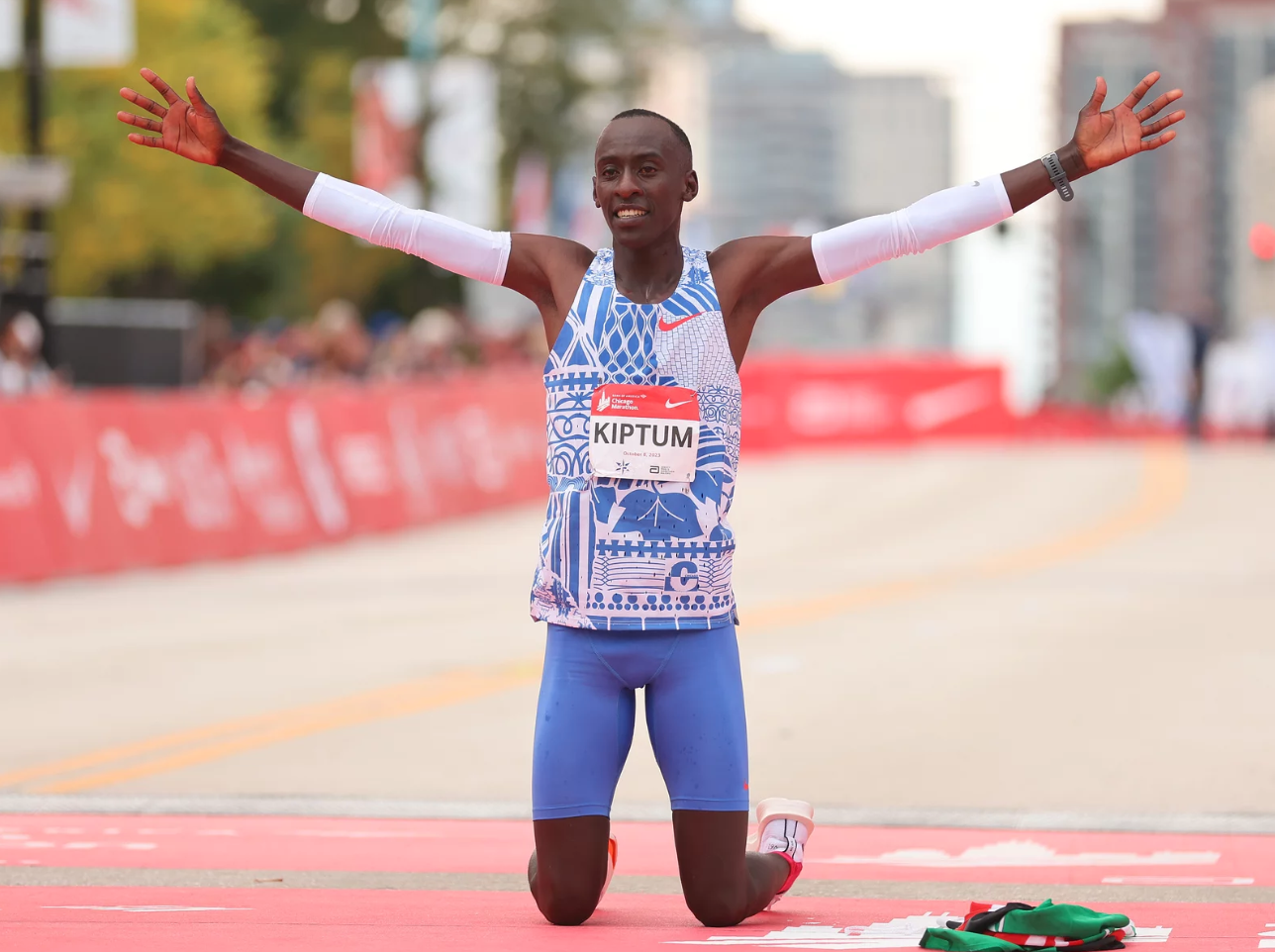02:00:35
by Meg Smith
On Sunday, 8th October, the marathon world record was broken yet again, this time by the rising Kenyan star, Kelvin Kiptum at the Chicago Marathon. A sensational 34s quicker than the previous record set by the all time great, Eliud Kipchoge in Berlin last year. If things continue on this trajectory, then perhaps Paris 2024 will see an official sub 2-hour marathon time set! We are also seeing a similar trend with the female record, with a new World Record set in Berlin this year by Tigst Assefa in 2:11:53 at the Berlin Marathon in September.
© Michael Reaves/Getty Images from https://www.npr.org/2023/10/08/1204559751/kelvin-kiptum-marathan-world-record-chicago
Over the last century, efforts have been ongoing to gain an insight into and a deeper understanding of human physiology and champion performances. What we have come to understand is that endurance performance seems to be underpinned by the following 3 factors:
VO2max
Lactate threshold (the ability to sustain a high % of VO2max for an extended period of time
Running Economy (the oxygen cost of running)
More recently, durability has also been added to the mix as a key performance indicator.
What sets elite marathon runners and world record holders apart from the rest, is their strength in all of these areas. Typically, elite marathon runners will have a VO2max somewhere between 70 – 85 ml/kg-1/min-1, a lactate threshold occurring around 75 - 85% of VO2max and an exceptional running economy. However, due to the marginal differences in maximal capacity among these top-class athletes, differentiation and performance prediction based on VO2max alone would not be very useful.
This is where running economy comes in. To understand what running economy is, how it affects performance, and different training methods to improve running economy, head over to this article on the Loughborough Sport website.
Typically, to gain a measure of running economy, you would need to visit a physiology lab to determine how much oxygen you’re using to produce different submaximal running speeds. However, this is an expensive exercise and something not everyone may have access to. Luckily for us though, Training Peaks has developed a way of measuring efficiency that doesn’t require a lab, a metric you might have come across – Efficiency Factor. The equation used to generate the EF is calculated by dividing the speed of the run (or a certain segment of a longer run) by the heart rate required to produce that speed. This calculation is most accurate when running around a track or sticking to a flat route.
Now, you might be wondering how heart rate is used to ‘predict’ the oxygen cost. We know that, as running speed increases, there is a greater demand for oxygen by the working muscles as they require more energy. This causes an increase in heart rate. The energy burned (due to level of demand) and associated heart rate to meet that demand therefore follow the same trend. To put it simply, as the energy required to run increases (usually as you’re getting faster), heart rate increases too. As you become more efficient (through improvements in fitness), the energy cost of running decreases, therefore heart rate decreases, too.
By comparing EF for similar workouts over time, you’ll be able to identify trends in your fitness and efficiency. Similarly, it provides an easy and convenient way to test your efficiency without needing to visit the lab!
References:
https://www.trainingpeaks.com/blog/the-efficiency-factor-in-running/

